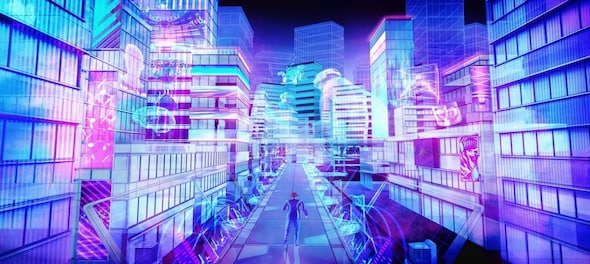
Technology can be unpredictable, but the most significant tech developments are often anticipated decades in advance. For instance, the basic concept of the world wide web came into the picture four decades before it was up and running.
It's a similar story for the 'next generation of the internet'. Neal Stephenson came up with the term 'Metaverse' in his novel Snow Crash in 1992. Three decades later, this virtual world is finally finding semblance. However, as pieces of the Web3 puzzle continue to fall into place, other terms like the multiverse and omniverse have entered the picture. Let's look at the differences between these concepts and see when we might see them come to fruition.
Metaverse
Over the years, several individuals and entities have tried to put the metaverse into words. Stephenson referred to the metaverse as a three-dimensional virtual world inhabited by avatars of real people. On the other hand, Facebook says that it is a set of virtual spaces where you can create and explore—and do everything one can imagine—with people who aren't in the same physical space as you.
Put simply, the metaverse is a world of its own, with people, interactions, and economies. This digital reality is made possible by an ecosystem of technologies like artificial intelligence, virtual reality, augmented reality, etc. These technologies make it possible for a user, more specifically, their avatar, to do business, play, and socialise with other people, even if they live on separate continents.
The metaverse was initially imagined around interoperability; several economies and systems unified in one platform, as described in a 2011 novel by Ernest Cline called "Ready Player One." However, there are many challenges in making an interoperable metaverse viable and functional. This is especially given the number of different metaverse platforms cropping up, each with its own assets, standards and policies.
Multiverse
So, do multiple metaverses coming together make a multiverse? The answer is not that simple, as we are uncertain about interoperability between virtual worlds. Unlike the metaverse, the multiverse is more about multiplicity or parallel virtual worlds.
As such, a multiverse is a collection of two or more metaverses, each with its own assets, independent digital identities, and participation laws. These verses may even partner with one another, allowing some standards to be shared between both spaces.
For instance, in Web2, we have several different social media networks, each with its own login credentials, usernames and policies. This is a multiverse of social media networks. On the other hand, we also have UPI apps - different platforms that enable quick and convenient payments. However, unlike social media networks, UPI apps share a common set of standards and are interoperable.
In terms of the metaverse, we have multiple gaming verses, like Axie Infinity, Splinterlands, The Sandbox, Decentraland, etc. All these constitute a gaming multiverse. Similarly, we could have an entertainment-based multiverse, a work-based multiverse, and so on.
It is certain that we will have many metaverses as the technology becomes ubiquitous, just like we have multiple websites and blogs on a single topic. The groupings of these metaverses will make up a multiverse. Judging by the sheer number of metaverse platforms coming up, we are moving towards a multiverse system rather than a unified metaverse, as depicted in the iconic "Ready Player One" novel.
Omniverse
The metaverse and multiverse both fall under the umbrella of the omniverse. It is the superset of all universes, both real and virtual. It is a construct that allows for interoperability, data sharing, technology transfer, and much more between verses. However, as a concept, the omniverse seems a bit far-fetched. For some, it may feel like something inspired by sci-fi movies. However, the same could be said about the internet, and several other technological advancements. Having said that, even if the omniverse did come to fruition, we are unlikely to see this superstructure anytime soon.
Check out our in-depth Market Coverage, Business News & get real-time Stock Market Updates on CNBC-TV18. Also, Watch our channels CNBC-TV18, CNBC Awaaz and CNBC Bajar Live on-the-go!


Supreme Court says it may consider interim bail for Arvind Kejriwal due to ongoing Lok Sabha polls
May 3, 2024 4:57 PM
10% discount on fare on Mumbai Metro lines 2 and 7A on May 20
May 3, 2024 2:40 PM

